In December a message popped up on my phone that resulted in me spending January in the Antarctic. One Ocean Expeditions runs trips to the Antarctic in winter (it’s summer down there) and the Arctic in summer, and I’d taught photography on one of their ships in the Arctic back in 2015. Now they wanted me to work for them down south. I’d already been there on one of their ships back in 2017, with my own private group through Pack Paddle Ski. So I left Kansas City on December 27, 2018, returning February 1, 2019. It was quite the adventure.
The first thing you need to know about a trip down there is that it’s not a “cruise.” These are smaller ships (generally about 100-150 passengers), and the trip is all about the getting off the ship and exploring. They’re called expeditions. There’s no Lido Deck, magicians, singers or dancers. The people working on the ship are either crew, running the ship, or staff (mostly outdoor guides), who give presentations and run the outings. Specialists give lectures on topics such as history of the area, birdlife, wildlife (like whales and seals), geography, glaciology (and icebergs) and photography, of course. These talks are mostly done during sea days, when the ship is sailing (from South America to/from the Falklands, South Georgia Island and/or Antarctica). And that’s because when not sailing, the crew and passengers are busy exploring off the ship via Zodiacs (large inflatable rafts with 60hp outboard motors).
Outings are either “landings” (on beaches or rocky shores, no docks down there!) to hike and explore, or “cruises.” On those, we ride around in the Zodiacs looking for wildlife in the water (penguins, whales, seals), or explore among the icebergs. If it’s not a sea day, we usually have two outings a day, one in the morning, one in the afternoon. Each outing will run on average two-to-three hours, longer for staff as we have pre and post operations to take care of.
My job during all of this is multi-faceted. Document the voyage and produce a video (stills and video) for everyone to take home. Teach photography classes. Answer questions and troubleshoot photography issues for passengers (including recovering corrupt cards). Turn out photos every evening for the next day’s ship paper (on video screens). Offer critiques. Run photo contests. And finally, produce commercial images for One Ocean to use promoting their trips. Needless to say, I didn’t have much free time. But that’s okay, I like to stay busy, and, after all, I’m in an amazing place. Oh, and it helps that I don’t get seasick 🙂
I worked two trips, the first an 18-day that left from Ushuaia, Argentina, visited the Falkland Islands, then South Georgia Island and finally Antarctica before returning to Argentina. The second was a 12-day trip just to Antarctica, going further south (below the Antarctic Circle) and spending more time on and around the continent. Rather than go into a longer explanation of both of those trips, I’ll instead share some photos and stories from the first one, focusing on the Falklands and South Georgia. I’ll have a later post with stories and photos from Antarctica itself. Enjoy!
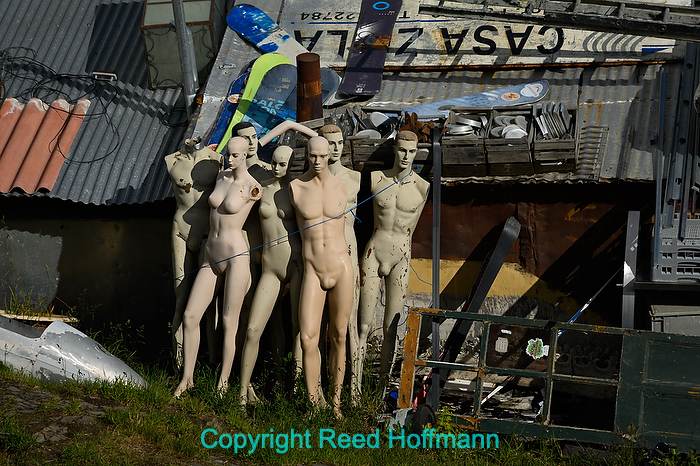
Ushuaia is near the southern tip of Argentina, and where most ships headed to Antarctica depart from. I had an entire afternoon to explore it, but my favorite photo was from my hotel room. Nikon Z7, Aperture Priority, Sunny white balance, ISO 100, 1/1000 at f/7.1 in Matrix metering, -0.3 EV, 24-120mm Nikkor lens at 120mm.
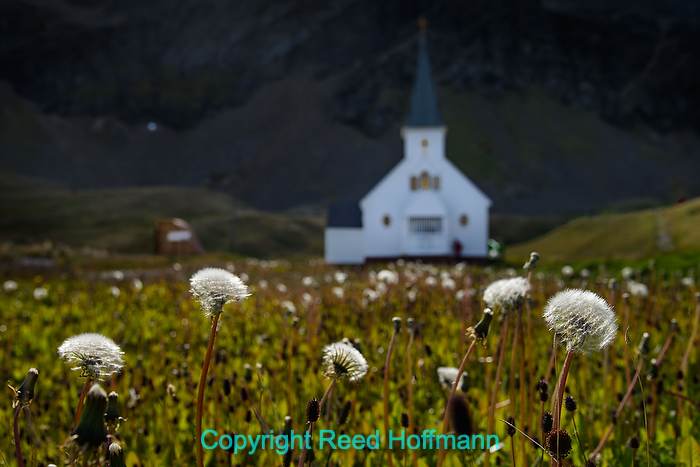
One thing you learn is that whaling continued into the 1960s, and proof of that is the old whaling station at Grytviken. I led a photo walk there to explore the area. Mostly rusting factory buildings, there’s also an old church. The dandelions are an invasive species on South Georgia, and will hopefully be eradicated someday. Nikon Z6, Manual exposure, Sunny white balance, ISO 100, 1/320 at f/7.1 in Matrix metering, Nikkor 24-120mm lens at 38mm,.
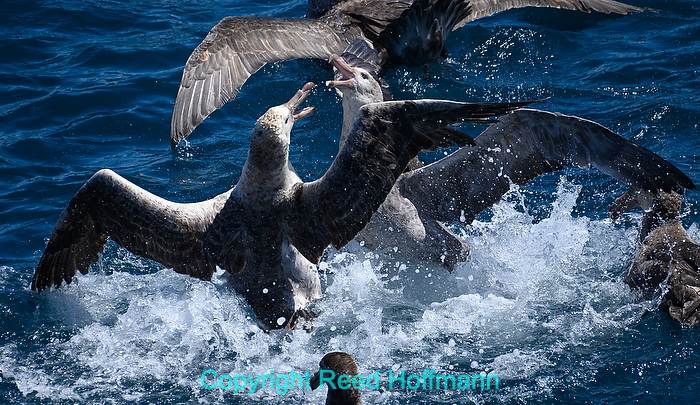
A pair of Southern Giant Petrels fight over a dead baby seal. Part of our group had done the Shackleton Hike while the rest of us visited a penguin rookery, and we were sailing over to the old whaling station at Stromness to pick them up when we came across this scene. Nikon Z7, Aperture Priority, Sunny white balance, ISO 160, 1/1250 at f/6.3 in Matrix metering, -1.3 EV, Nikkor 200-500mm lens at 500mm.
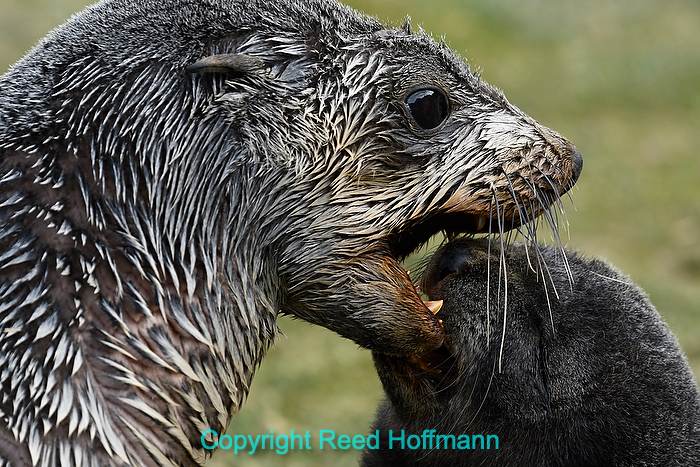
Fur seals look adorable but are very aggressive. They’re constantly fighting with each other, even the pups, and we had to keep a close eye and fend them off regularly with walking sticks. I brought a monopod on the trip, but the only use it got was to discourage seals from biting me. Nikon D500, Aperture Priority, Sunny white balance, ISO 1100, 1/1250 at f/5.6 in Matrix metering, -0.3 EV, Nikkor VR Zoom 200-500mm f/5.6 lens at 420mm.
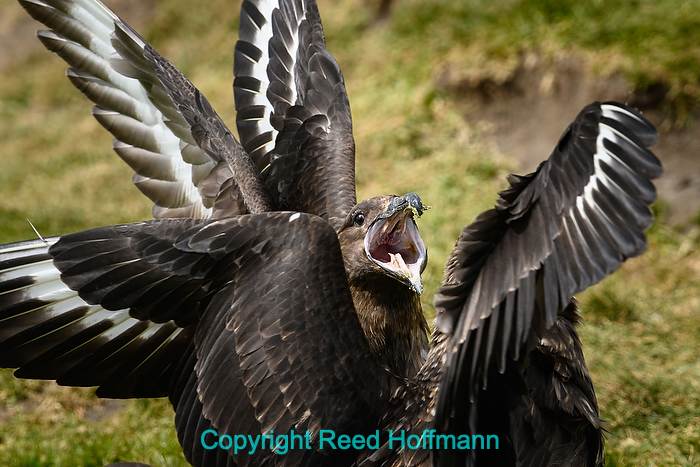
One of my favorite birds to photograph were the Skuas. They’re very active, preying on penguin eggs and chicks as well as baby seals. This was at Anchorage Bay on South Georgia Island. Nikon Z7, Aperture Priority, Sunny white balance, ISO 450, 1/1250 at f/6.3 in Matrix metering, -0.3 EV, Nikkor 200-500mm lens at 320mm.
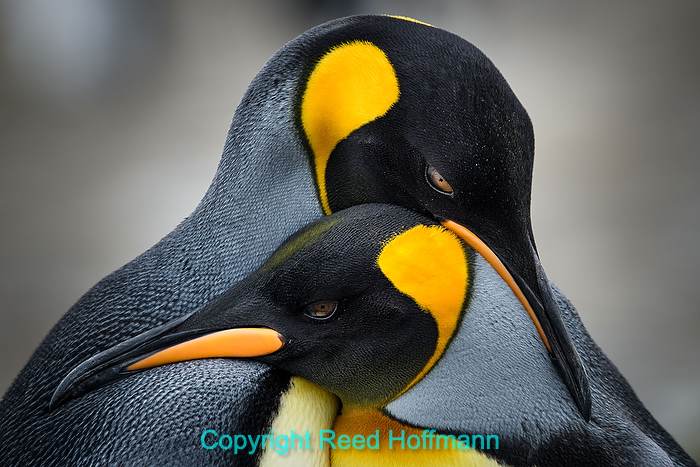
Of the seven different penguin species we saw on the trip, I found the Kings to be the most beautiful. There are strict limitations on how close you can get to the wildlife, making long telephoto lenses essential to coming away with photos like this. Nikon D500, Aperture Priority, Sunny white balance, ISO 560, 1/1600 at f/5.6 in Matrix metering, -0.3 EV, Nikkor VR Zoom 200-500mm f/5.6 lens at 410mm.
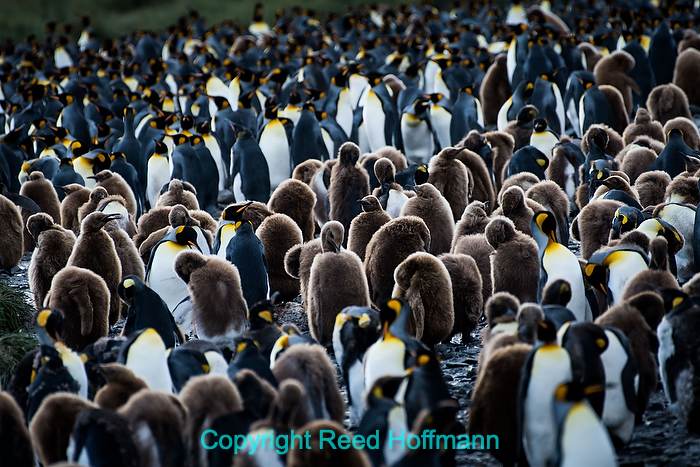
The number of King penguins at Salisbury Plain made it clear why South Georgia is often referred to as “The Serengeti of the Southern Ocean.” The brown ones are chicks. Nikon D500, Aperture Priority, Sunny white balance, ISO 900, 1/1250 at f/5.6 in Matrix metering, 0.0 EV, Nikkor VR Zoom 200-500mm f/5.6 lens at 500mm.
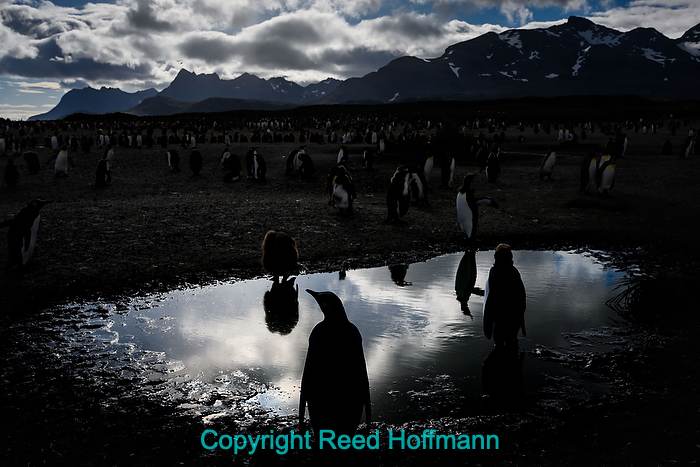
We had a beautiful morning for our landing at Salisbury Plain, which has one of the largest King penguin rookeries on South Georgia Island. I chose to work against the sun, exposing for the sky and reflection in the water to make a more striking photo. Nikon Z7, Aperture Priority, Auto white balance, ISO 125, 1/1000 at f/10 in Matrix metering, -2.3 EV, Nikkor 24-120mm lens at 35mm.
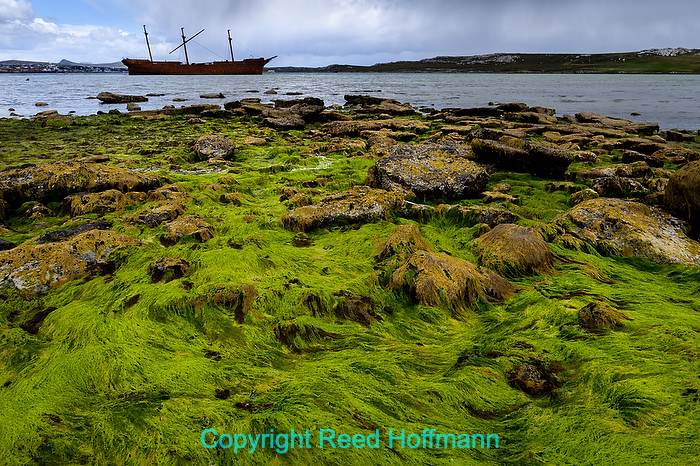
We visited the town of Stanley primarily to go to Gypsy Cove, where we saw Magellanic penguins, Shags, Steamer ducks and more. A few of the passengers and I chose to walk back to town. The seaweed on the rocks made a nice foreground for the wreck. And those dramatic skies meant we got a little wet on our walk. Nikon Z6, Aperture Priority, Auto white balance, ISO 160, 1/160 at f/11 in Matrix metering, -1.0 EV, Nikkor 24-120mm lens at 24mm.
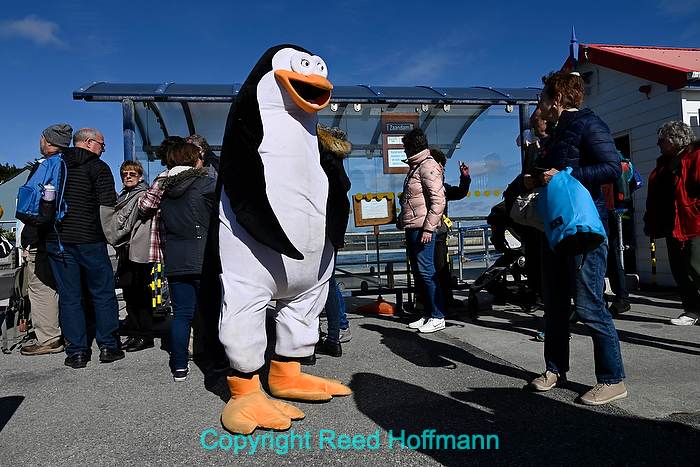
The town of Stanley, on the Falkland Islands, gets cruise ships visiting. And of course, that means you get the kind of things that are drawn to cruise ships. Nikon Z6, Aperture Priority, Auto white balance, ISO 200, 1/1000 at f/8 in Matrix metering, -0.7 EV, Nikkor 24-120mm lens at 24mm.
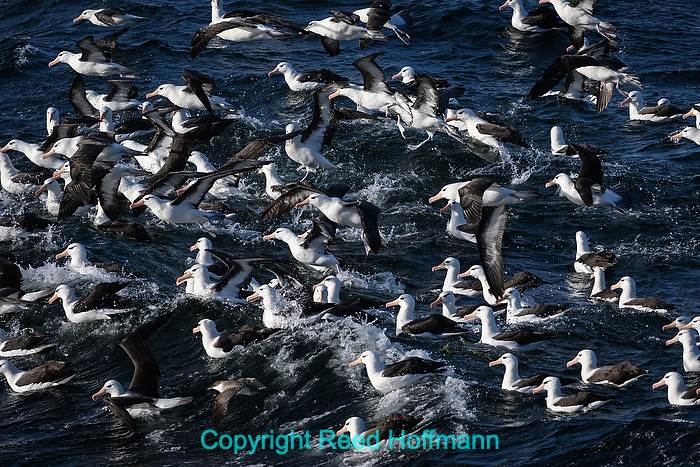
At one point we sailed through hundreds of Black-browed Albatrosses feeding on the water. Seeing them in heavy concentrations like this is unusual. Nikon Z7, Aperture Priority, Natural Auto white balance, ISO 250, 1/1600 at f/8 in matrix metering, -2.0 EV, 200-500mm Nikkor lens at 260mm.
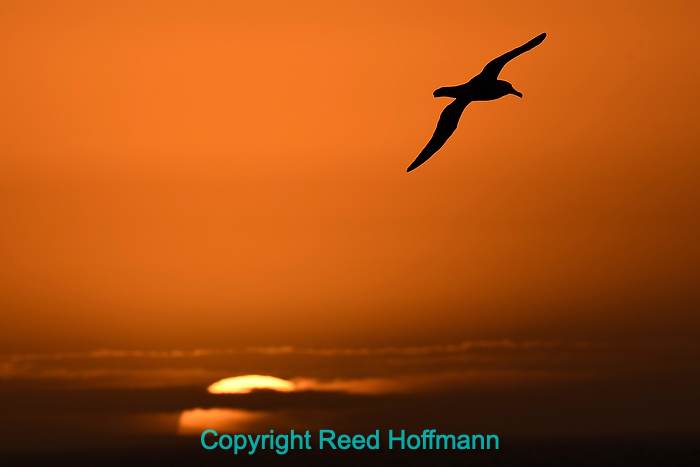
Albatrosses and Petrels are seen in abundance down there, and could often be found following the ship as we sailed across the Southern Ocean. I used Manual exposure to lock down how I wanted the sun to appear, then waited for the birds. Nikon D500, Manual exposure, Sunny white balance, ISO 320, 1/1600 at f/9 in Matrix metering, Nikkor VR Zoom 200-500mm f/5.6 lens at 500mm.
(If you like this story, please share it with your friends and let them know about the links on photography that I post on my business Facebook page. I’m also on Instagram and Twitter, @reedhoffmann)


Trackbacks/Pingbacks